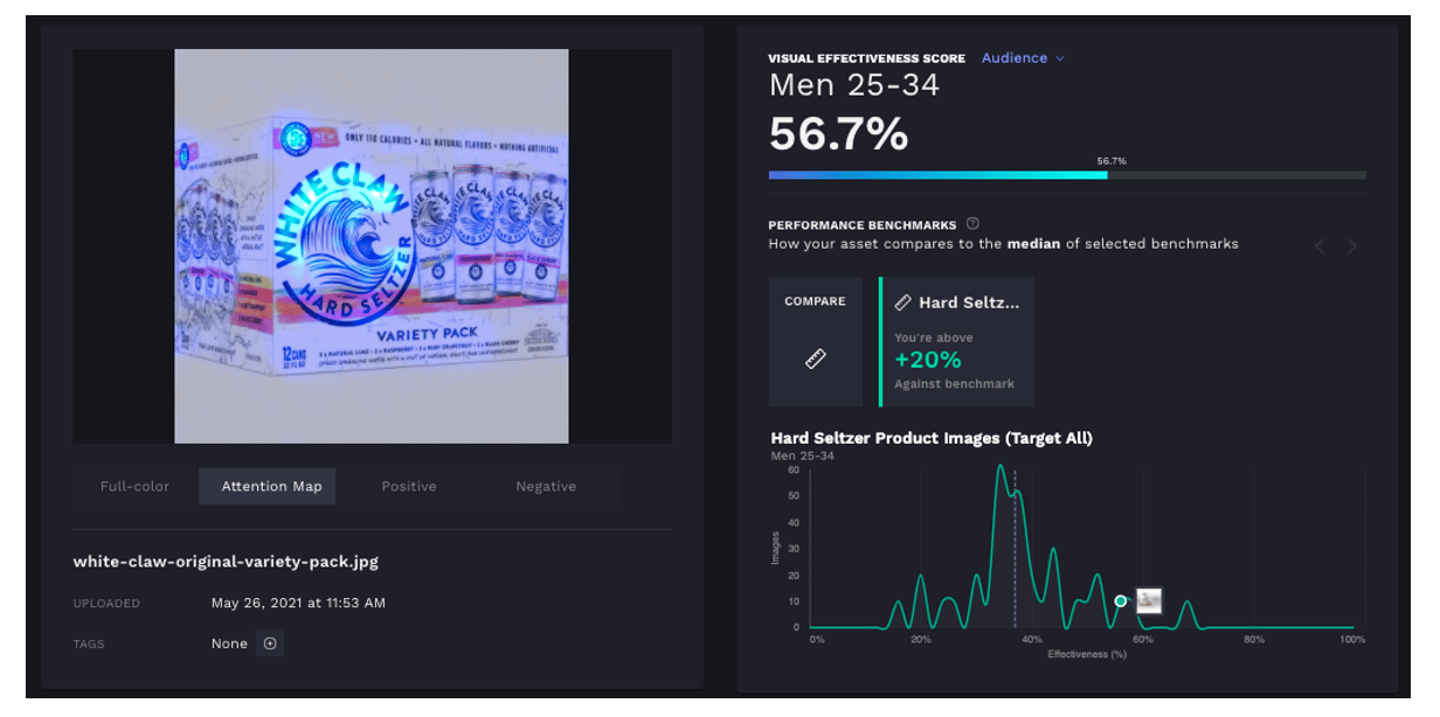Visual Effectiveness: AI Reveals A Driving Force Behind White Claw’s Hard Seltzer Takeover
When SpikedSeltzer's brand hard seltzer launched in 2013, it was the first of its kind, paving the way for a new category of beverages that would eventually become synonymous with the brand’s name. Throughout its first years in the market, SpikedSeltzer sold approximately 250,000 cases per year. Its consumer demographic was 70% female, driven by the brand’s positioning as a light, low-calorie alternative to other alcoholic beverages.
In 2016, the market shifted. White Claw arrived as a new entrant, and SpikedSeltzer was acquired by Anheuser-Busch. White Claw’s popularity surged in 2019, as “White Claw Summer” began trending across social platforms. This boost in popularity enabled the brand to gain traction with a whole new market that SpikedSeltzer failed to capture: Millennial men.
Between 2016 and 2018, the hard seltzer market exploded, with multiple hard seltzer product lines finding their way to grocery and liquor store shelves. Within five years of SpikedSeltzer launching an entirely new CPG category, hard seltzer became the top-growing product segment in the beer category, spurring even more new entrants.
In the past three years, the hard seltzer market has grown tenfold, from ten brands in 2018 to now more than 100 brands, with one brand rising to the top: White Claw.
How Visual Intelligence Predicted White Claw's Rise
White Claw’s success in the hard seltzer category can be attributed to many factors, but one was largely overlooked because until now, it couldn’t be quantified or measured. Today, AI-powered visual intelligence technology makes it possible to measure the visual effectiveness of new pack design and product imagery, giving brands the power to compare its visual elements against its competitors.
As revealed by this technology, SpikedSelzer’s original 2016 pack design was considerably less effective for men in their 20s and 30s compared to White Claw as it entered the market.
Visual Effectiveness Scores for both brands’ packaging designs from 2016 quickly reveal a key advantage for White Claw. The brand's product is visually appealing to both female and male demographics, whereas the original SpikedSeltzer packaging design resonates only with women and is just marginally more effective than White Claw (4% above benchmark).
Compared to benchmark scores of hard seltzer packaging designs in the U.S., SpikedSeltzer’s original design sits one percentage point below the benchmark for men 25-34, while White Claw’s original design outperforms the existing shelf set of hard seltzers by 22%.
SpikedSelzer’s original 2016 pack design is considerably less effective for men in their 20s and 30s compared to White Claw. The White Claw advantage: launching with a top-performing packaging design that effectively appealed to both women and men.
Since its inception five years ago White Claw has seized the opportunity to dominate the hard seltzer market. According to reports, the U.S. hard seltzer market reached $1.8 billion in 2020 and is expected to grow 35% this year, with White Claw remaining to own the lion's share of the market.
Jehan Hamedi is CEO and founder of VIZIT.




